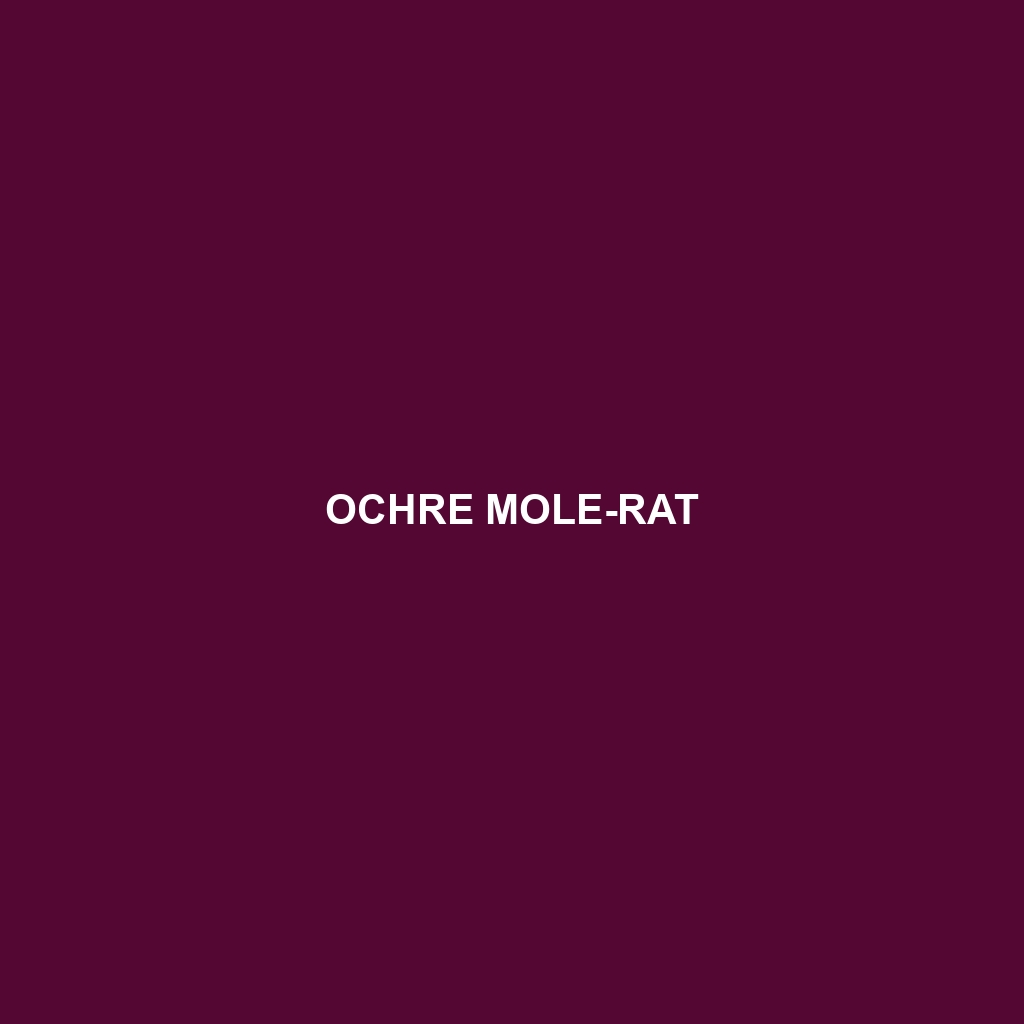Common Name: Ochre Mole-rat
Scientific Name: Georychus capensis
Habitat:
The Ochre Mole-rat primarily resides in the sandy soils of southern Africa, particularly in regions such as South Africa, Namibia, and Botswana. These mammals favor areas with well-drained soil where they can dig extensive burrow systems. They are predominantly found in savannas, grasslands, and occasionally, agricultural fields, making them an integral part of these ecosystems.
Physical Characteristics:
The Ochre Mole-rat is a medium-sized rodent, reaching an average length of about 20 to 30 cm (8 to 12 inches). Its body is stout with a robust build, facilitating its burrowing lifestyle. Characterized by a dense, ochre-colored fur that provides camouflage against the sandy soil, this species has short legs and small eyes, adapted for a subterranean existence. Notable features include large incisors that protrude prominently, perfect for digging and foraging.
Behavior:
These nocturnal creatures exhibit unique behaviors tailored to their underground lifestyle. Primarily solitary, the Ochre Mole-rat spends most of its time burrowing and constructing elaborate tunnel systems. They are known for their impressive digging skills, creating multiple chambers for nesting and food storage. During the breeding season, however, they may exhibit social behavior, with temporary aggregation observed among mates.
Diet:
As herbivores, Ochre Mole-rats primarily feed on tubers, roots, and various subterranean plant parts. Their diet is rich in carbohydrates, which they obtain by excavating the soil. They are known to store food within their burrows, allowing them to sustain themselves when food sources above ground are scarce. This behavior not only highlights their adaptability but emphasizes their role as seed dispersers within their habitat.
Reproduction:
The breeding season for Ochre Mole-rats typically occurs in the warmer months, aligning with optimal food availability. Females give birth to litters of 2 to 6 pups after a gestation period of about 3 weeks. The young emerge blind and helpless, depending on the mother for care and nourishment. Weaning occurs at around 4 weeks, and they become independent shortly thereafter, although maternal care may continue for some time.
Conservation Status:
The Ochre Mole-rat currently holds a conservation status of ‘Least Concern’ according to the IUCN Red List. However, habitat loss due to agricultural expansion and urbanization poses a potential threat to local populations. Continuous monitoring is essential to ensure their populations remain stable and to prevent any future categorization as vulnerable.
Interesting Facts:
One fascinating aspect of the Ochre Mole-rat is its ability to dig at a remarkable speed, often reaching depths of over 2 meters (6.5 feet) in search of food. Furthermore, this species is a vital component of its ecosystem as it aerates soil through its digging activities, promoting healthy plant growth and influencing local vegetation patterns.
Role in Ecosystem:
The Ochre Mole-rat plays a crucial role in its ecosystem by contributing to soil aeration and nutrient cycling. By burrowing, it helps to mix organic material into the soil, which enhances plant growth and supports the overall health of the grassland and savanna habitats. Additionally, they serve as a food source for predators, maintaining a balance within the food web.
